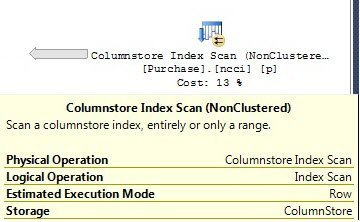It is surprising to see that lots of people do not know that SQL Server Fill Factor 0 (which is the default value when SQL Server is installed) is equal to value as 100.
SQL SERVER – Identify Table Where Clustered Index is Not a Primary Key – DMV
Let us first see script which will return us tablename with schema where clustered index is not a primary key.
SQL SERVER – Extended Events to watch for using ColumnStore Index
In the recent past, I have written a number of posts around ColumnStore Index and how they function. Some of the nuances of working with ColumnStore Indexes are available in this blog for reference. I have also written a few posts around Extended Events. One of my DBA friends pinged me to check if there were any way to use Profiler to see how ColumnStore Indexes worked. Obviously, there was nothing much of help I could offer because there were actually none in reality.
SQL SERVER – Updating Data into ColumnStore Index with SQL Server 2012
Off late I have been writing tons of content working with SQL Server 2016. Some of the cool capabilities was to introduce the ability to update a ColumnStore index. This was also covered in the SQL SERVER 2016: Updating Non-Clustered ColumnStore Index Enhancement earlier. One of the readers asked me an interesting question about being inside SQL Server 2012 and they wanted to write / update their data on the ColumnStore enabled system and what was the process for them. The email started saying they were getting the following error.
SQL SERVER – ShowPlan XML Additions for ColumnStore Indexes
The last time when I wrote about ColumnsStore FAQ, one of the readers had an interesting question. The question was around how to identify the traits of using a column store inside an execution plan. The very thought got me thinking. I was thinking where to start. I remembered that ShowPlan XML was a great way to see some of these attributes. The very next question that came up, what should one look forward to inside a ShowPlan XML.
SQL SERVER – 2016 – Creating Additional Indexes with Clustered ColumnStore Indexes
SQL SERVER – Fix SQL Server Index Fragmentation with dbForge Index Manager
You need to know SQL Server basics to keep database performance at the highest level. This knowledge will also help you to be prepared to any potential problems. When working with files, you may discover that there is not enough free space to store the required data in the file. By default, in such situations, SQL Server locks the file and extends it (it’s called – autogrow). Let us learn about SQL Server Index Fragmentation.




